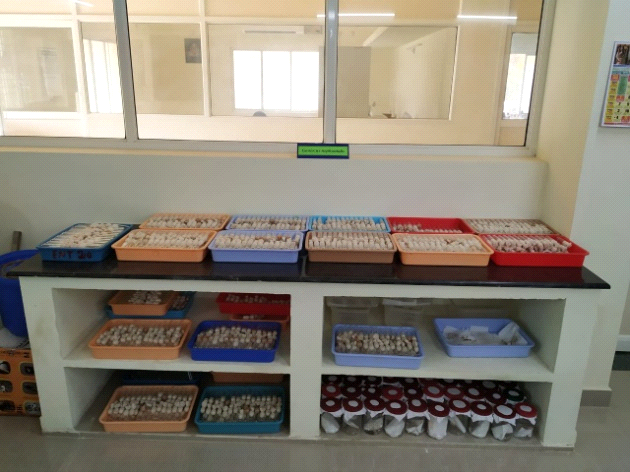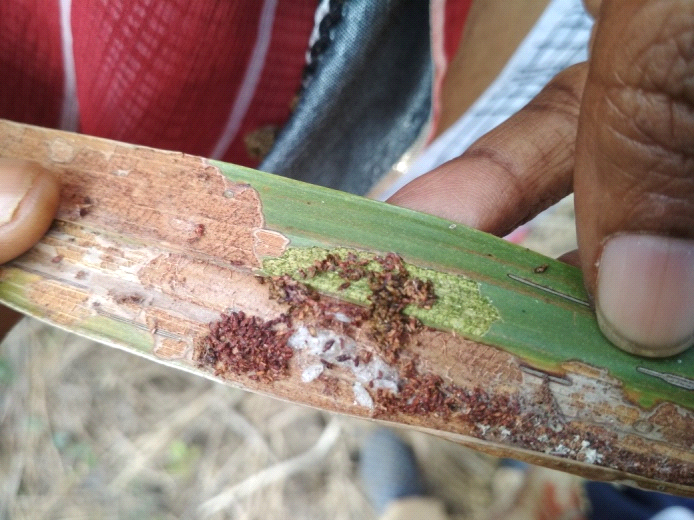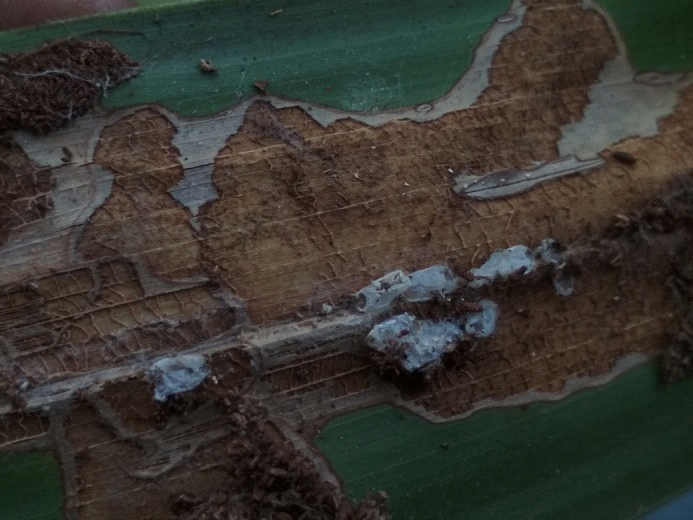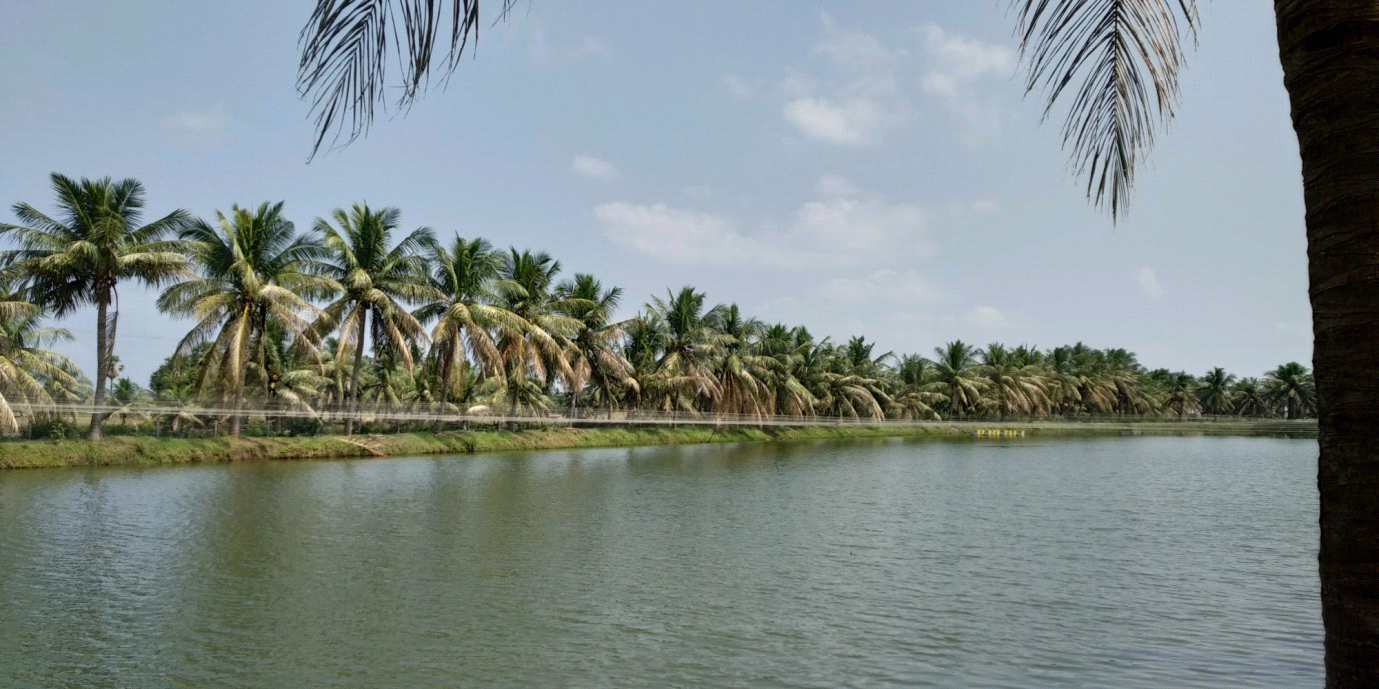Being found mainly in the coastal and backwater areas of Andhra Pradesh, especially in the East Godavari Districts, the leaf eating caterpillar known as Opisina arenosella is one of the serious pests of Coconut crop. The caterpillar feeds on the green matter from the lower leaf surface, remaining within the silk galleries made of chewed-up fibre, frassy material and presents a dried, grey colored leaflets on the lower crown presenting a sickly appearance.

The severe damage leads to reduce the production rate of flower spikes, increase in the premature nut fall and retarded growth, in extreme cases, the whole plantation presents a scorched appearance.
During the Year - 2018-19 (October to April), the incidence of black headed caterpillar was noticed in the range of 38.64 to 59.62 % on the coconut palms grown along the fish pond bund with the medium damage intensity (2-3 damaged fronds with clear drying) in an area approximating to 100 acres in S. Yanam village of Uppalaguptham Mandal in Kona Seema region of East Godavari District, Andhra Pradesh.
Keeping the harms caused to the aquatic ecosystems by the spray of harmful chemicals, the farmers of the village approached urged the Horticultural Research Station, Ambajipeta under the All India Coordinated Research Project on Palms under Dr. Y.S.R. Horticultural University through Department of Horticulture, Government of Andhra Pradesh for the parasitoids of black headed caterpillar.
The Horticulture Department conducted the Training Programme and Meetings with an aim of creating the awareness among the farmers on the pest stages, damage symptoms and the parasitoid release techniques.
Parasitoids Release
The farmers of S. Yanam village were supplied a total of 84,000 Nos. of Goniozus nephantidis and 1,32,000 Nos. of Bracon hebetor for the sequential release on the black headed caterpillar affected palms along the fish pond bunds. On the observance of medium level of infestation, a total of 8-10 release of stage specific parasitoids were made at the rate of 20 Nos. of G. nephantidis per palm and B. hebetor at the rate of 30 per palm in 1% of the infested palms.

Parasitoid Establishment and Pest Management
One of the farmer, Shri Vanteddu Venkateswara Rao having an approximate acrage affected area 40 acres in S. Yanam village released the stage specific parasitoids of B. hebetor (28,800 no’s) and G. nephantidis (19,200 no’s) in around four releases. The process resulted in sharply declining the pest population. The larval population of Opisina arenosella decreased by 39.13 to 78.38% after three months and up to 98.57 to 100% after six months of release of parasitoids. Similarly, the pupal population also decreased by 33.33 to 87.50% after three months and the process led to decrease the pupal population by 100%.


After six months of parasitoid release, the suppression of the pest was clearly visible, emerged cocoons of G. nephantidis and B. hebetor was noticed and no pest population was observed in the newly emerged leaves. Due to the non-spray of chemicals, the natural occurrence of egg predator Cardiastethus exiguus was observed in the field.
The released parasitoids were able to self-perpetuate successfully and managed the pest in all the black headed caterpillar-affected gardens of S. Yanam village.


The process of biological control is a cost-effective and environment-friendly method that does not introduce pollutants into the environment and is an alternative to the chemical or the mechanical control methods. The Post released feedback showed the satisfaction among the farmers about the role of bio-agents in suppressing the pest without application of chemical pesticides.
(Source: ICAR-All India Coordinated Research Project on Palms, HRS, Ambajipeta Centre, Andhra Pradesh)







फेसबुक पर लाइक करें
यूट्यूब पर सदस्यता लें
X पर फॉलो करना X
इंस्टाग्राम पर लाइक करें